You can spray paint glass surfaces if you sand or apply primer over them to improve the paint penetration or adhesion. Glass is a non-porous surface that doesn’t absorb liquid, so you must sand to create tiny holes (pores) for penetration.
To spray paint glass, prep the work area, clean the glass, wet-sand the glass, apply primer, and apply spray paint.
Spray paint adheres but can peel off if you don’t sand or apply primer over glass. It’s recommended to use acrylic enamel spray paint on slick surfaces as it has better adhesion and lasts longer.
Does Spray Paint Adhere to Glass Surfaces?
Spray paint does adhere to glass surfaces, but the adhesion is weak as the glass surface is slick and impermeable.
Glass is a non-porous material and doesn’t absorb liquids (such as spray paint). When you spray paint it, the coating will stay on top of the surface without penetrating.
While spray paint may stick initially as it has impressive bonding qualities, the finish will peel off after a while.
Spray paint must penetrate the surface (just a bit) to stick, so to improve the adhesion rate, lightly sand the glass surface with fine-grit sandpaper. Fine-grit sandpaper creates small holes (unnoticeable) that the spray paint can penetrate.
You can also prime the glass surface before applying spray paint to improve the adhesion rate.
What Spray Paint Types Can You Use Over Glass?
You can use acrylic enamel spray paint over glass as it sticks well to non-porous surfaces and produces a glossy finish that protects the surface from different elements.
While most spray paints will not retain their finish on glass after 18 months, spray acrylic enamel can last for over 3 years on heavily used surfaces. It can last over 6 years on decorative surfaces that don’t see much action or movement.
Spray acrylic enamel is easy to spray, dries quickly, and has a bright color. Artists use it to add detail and color. It comes in various sheens and colors, so there is a broad list to pick from. In addition, you can mix it with other paints due to its absorbent qualities.
However, spray acrylic enamel only produces a glossy finish. If you want a dry, flat, or matte finish, use water-based spray paint.
How To Spray Paint Glass?
To Spray paint glass, do the following things.
- Prepare the Work Area.
- Clean the Glass.
- Wet-Sand the Glass.
- Apply Primer.
- Apply Spray Paint.
The tools you need for this project are listed below.
- The required spray paint (remember, it must be designed for use on glass)
- Primer
- Rags
- Glass wipes or rubbing alcohol
- Gloves
- Water
- Paint shield
- Waterproof sandpaper (optional)
1. Prepare the Work Area
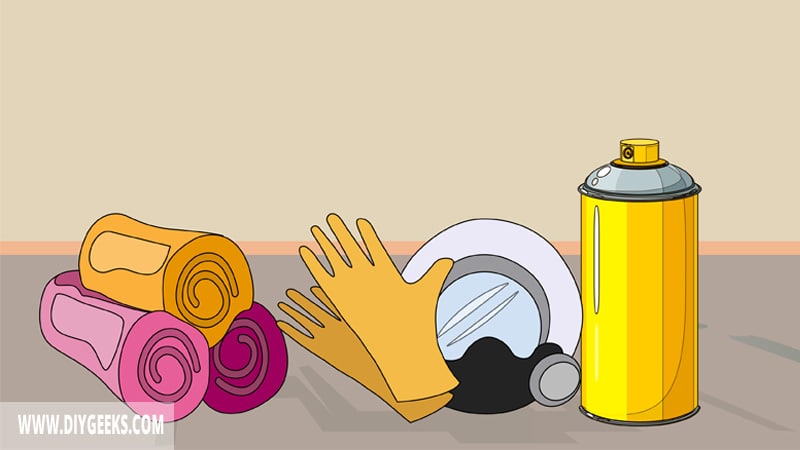
Prep the work area by covering or removing the furniture and objects you don’t want to spray paint.
2. Clean the Glass
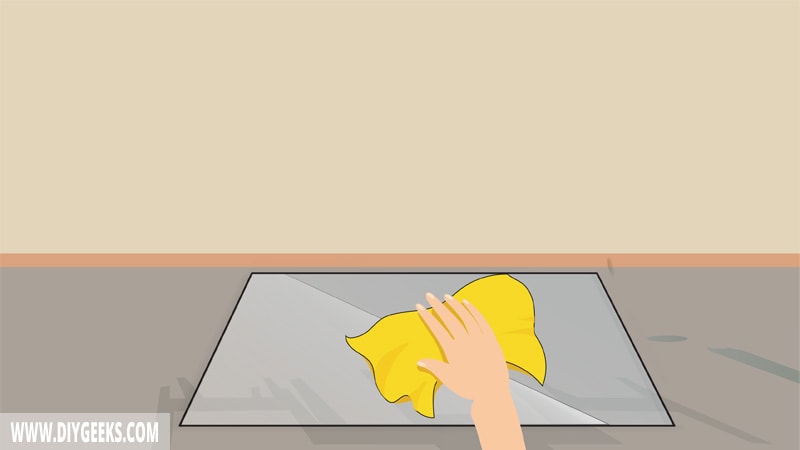
Clean the glass surface with a glass wipe or rubbing alcohol to remove dust and debris that can prevent the spray paint from penetrating and adhering.
For glass items, such as vases, put your hand inside the vase, hold it, and then wipe it. This prevents you from leaving fingerprints and stains on the surface as you clean it.
3. Wet-Sand the Glass
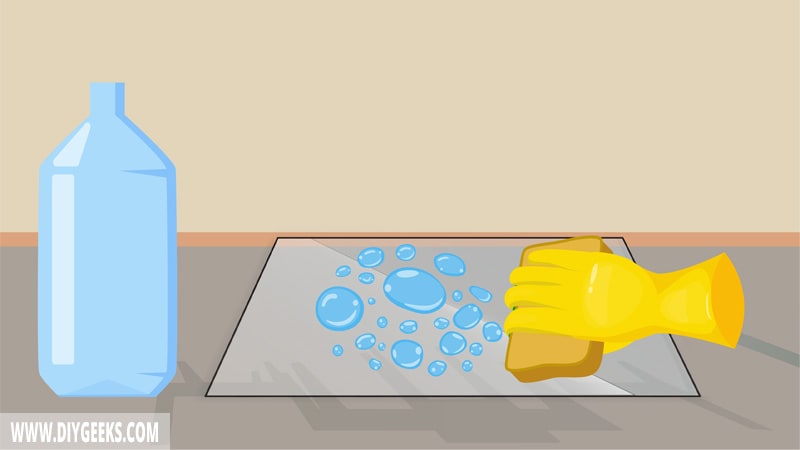
Wet sand the glass surface to remove imperfections and bumps, and create tiny pores (or holes) that spray paint can penetrate and adhere to.
To wet sand glass surface, do the following things.
- Pour water into a small bowl.
- Soak a waterproof fine-grit sandpaper (220-grit) or sanding block in the water.
- Use the waterproof sandpaper to sand the glass surface with circular motions.
4. Apply Primer
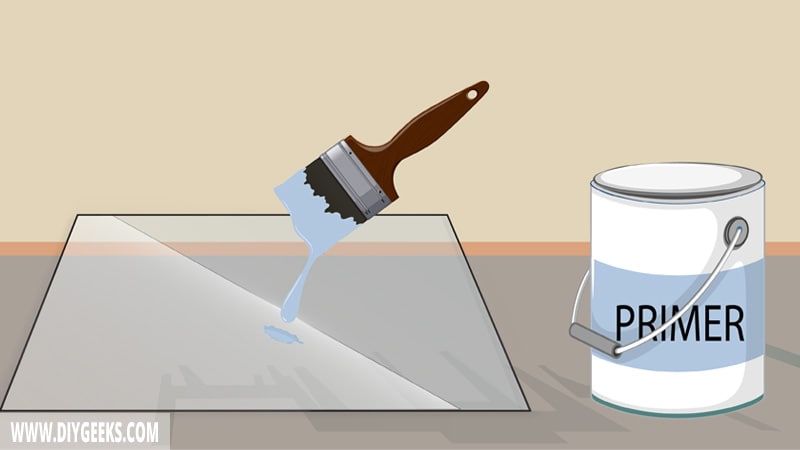
Apply two (2) primer coatings over the glass surfaces using a paintbrush or sprayer. Wait until one coat dries before applying the next one.
Don’t apply primer if you are planning to apply transparent paint finishes as the primer covers the glass surface.
5. Apply Spray Paint
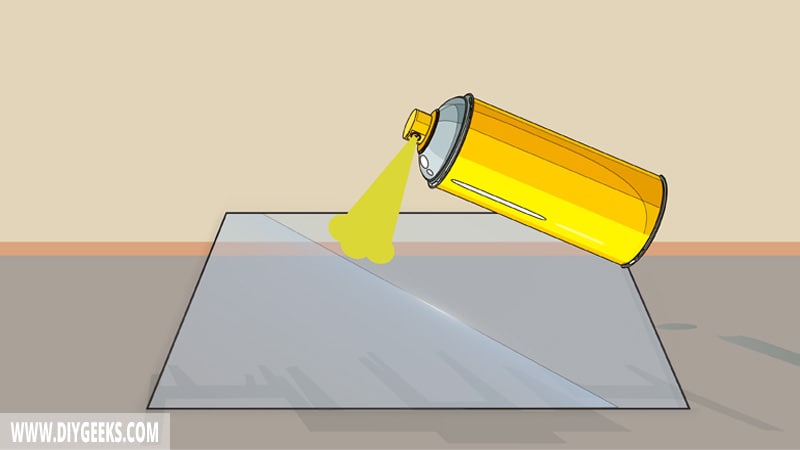
Apply three (3) spray paint coatings over the glass surface using a paint brush, sprayer, or roller. Wait until one coat dries, wipe the excess, and apply the new coat.
Do You Need To Seal Spray Paint on Glass?
You need to seal spray paint over exterior glass surfaces, but you don’t need to seal decorative glass surfaces.
A sealer finish protects the finish underneath it by preventing dust, moisture, and liquid from penetrating and damaging it.
A sealer, such as polyurethane, forms a glossy thick layer over the finish and protects it from different elements. Most sealers are clear coats (transparent finish), so they won’t interfere with the color shade of the finish.
Related Read: Can You Spray Paint Grass?
[sc name=”spray-paint-glass”]


